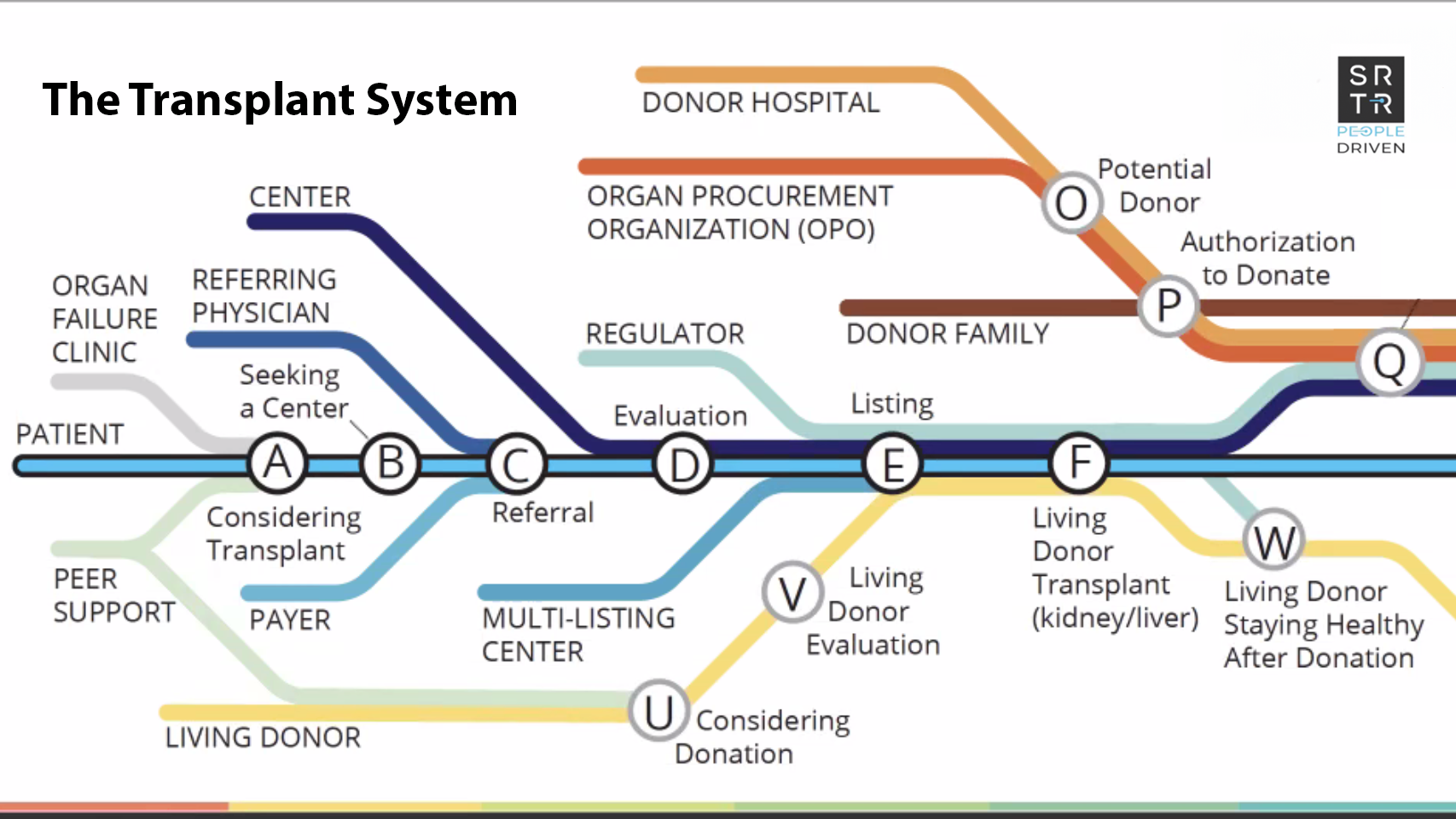Dr. Cory Schaffhausen is a health services researcher at the Hennepin Healthcare Research Institute, an Assistant Professor at the University of Minnesota, and a human-centered design engineer at the Scientific Registry of Transplant Recipients (SRTR). His research applies human-centered design and stakeholder engagement to improve care delivery for patients with chronic diseases. His research has been supported by the National Institutes of Health (NIH), the Agency for Healthcare Research and Quality (AHRQ), and many others. His research in organ transplant includes creating tools to help patients prepare for an organ offer and applying the model of a Learning Health System to monitor equity in organ donation. Through his work with SRTR, he works alongside patients and key stakeholders to use SRTR statistics and resources to better support patient and clinician decisions throughout the transplant journey.
People Driven Transplant System Map – SRTR Task 5
The Alliance Conversation Series brings you cost-free, fast-paced collaborative opportunities that highlight successful donation and transplantation practices across the country. Through shared insight, multidisciplinary experts identify solutions to critical challenges affecting the community of practice and actively share them for open discussion and broader knowledge of effective practices.
The sessions encourage real-time feedback and participation from viewers.
Overview: In July of 2022, SRTR hosted a multistakeholder consensus conference, often called the Task 5 conference, to identify information and metrics desired by stakeholders in the transplantation system. These stakeholders broadly included transplant patients/caregivers, living donors and deceased donor family members, transplant and OPO professionals, government agencies and others (payers, patient advocacy organizations, other allied organizations, researchers, and press).
SRTR’s People Driven Transplant System Map was designed as a guide for discussions during the conference to follow the patient experience through the complex process of organ donation and transplantation. Along the journey, helpful information and data were identified at specific points in the process.
In this session, we will take a closer look at the Map and hear how it relates to the larger SRTR Task 5 Initiative. We will explore how the Transplant System Map can be further utilized to guide development of tools and conversations with patients. We will also hear about how the Map can be tailored to specific situations and use cases. We will open discussion to new ways SRTR could support the transplant community with additional updates to the Map.





